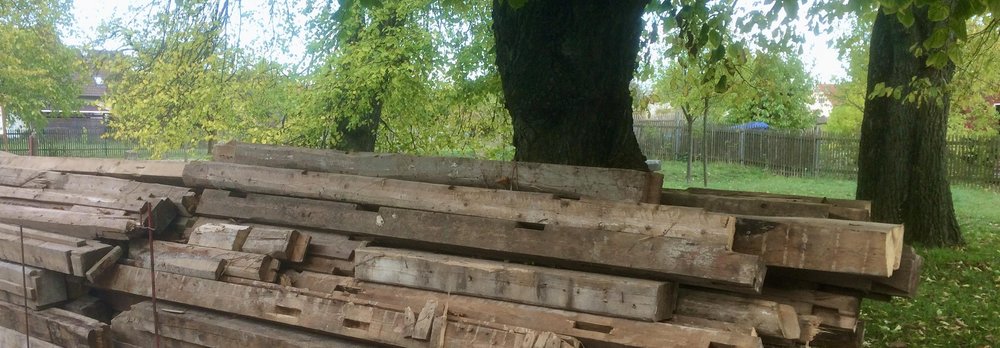Climate Heritage


In the spirit of and as a member of the global Climate Heritage Network, we are convinced that art, culture and heritage are invaluable resources for climate protection-led social transformations. For these to succeed, plausible visions of a low-carbon, equitable and climate-resilient future need to be designed. So far, attention has been biased towards a climate policy ecosystem that prioritises a limited number of technological and market-based solutions, while systemic, uncertain or contested factors that are not so easily modelled or quantified are not considered. It is about linking the technological and economic approaches with attention to historical and socio-economic systems that have contributed to climate change. In addition, it is important to use the experience that the cultural heritage has passed on with regard to climate- and environment-friendly building and planning for the future. And finally, in the sense of a "building turnaround", we lay importance on the need to preserve the existing building stock, to transform it in a future-oriented way and thus to avoid demolition and new construction as much as possible.
![Abbildungsnachweis: Archivio Fotografico Valdese [AFV], David Peyrot, Angrogna: La Sella. Diversi gruppi nel prato, una vacca che volge il capo, 1886](/fileadmin/_processed_/5/1/csm_Der_Zauberberg_fbf2828fe9.jpg)
Val Pellice is located in the Cottian Alps in western Piedmont. The height of the mountains here inclines within a very short distance from the lowlands of river po to the highest peaks of the alps, which demanded a high effort of the inhabitants to make the inhospitable environment a place to live. As conventional agriculture was not very productive due to the morphological and climatic challenges, a form of pastoral farming with temporary shelters in three different altitudes evolved. Characterised by the culture of the Waldensians, who as a persecuted religious community sought refuge in the seclusion of the valley, a particularly impressive form of anonymous Architecture evolved.
The research includes the mapping of still existing stone houses, an architectural analysis as well as a historical classification. The extensive photographic archive of the Waldensians will also be utilised and the results of the research will be graphically processed for publication.
La Val Pellice si trova nel versante italiano delle Alpi occidentali. Le sue condizioni morfologiche e climatiche limitano fortemente, come in tutta l'area alpina, le possibilità di sfruttamento del suolo e costringono la popolazione, dedita all'agrosilvopastoralismo, a una continua mobilità tra bassa valle, quote intermedie e alpeggi, cui corrispondono forme abitative diverse, seppure tutte in pietra a secco. La Val Pellice è anche parte delle Valli Valdesi e la ricerca si propone di indagare anche l'eventuale influenza di una cultura religiosa protestante sull'architettura anonima della valle.
Nell'ambito del lavoro di ricerca, le case in pietra esistenti saranno mappate, analizzate architettonicamente e classificate storicamente. Si utilizzerà anche l'ampio archivio fotografico della comunità valdese e i risultati della ricerca saranno elaborati graficamente per la pubblicazione.

Im Juni 2023 startete das interdisziplinäre DFG-Forschungsprojekt „Wohnen im Denkmal: Erhaltung und Gestaltung von denkmalgeschützten baulichen Realisierungen des 20. Jahrhunderts“.In den kommenden drei Jahren sollen in Zusammenarbeit zwischen dem Lehrstuhl Stadtplanung an der Bauhaus-Universität Weimar und dem Forschungsbereich Denkmalpflege & Bauen im Bestand der Technischen Universität in Wien der Zugang zum und die Teilhabe am Wohnen im Denkmal untersucht werden.

Hitze im Sommer, Starkregen sowie Stürme setzen dem Bauhausgebäude und hier vor allem der berühmten Glasfassade enorm zu. Nun steht eine Sanierung an, um die derzeit notgesicherte Fassade für künftige Generationen zu erhalten. Dabei stellen sich viele Fragen, denn bei den verschiedenen baulichen Maßnahmen seit 1945 kam es zu zum Teil erheblichen Eingriffen in die Gebäudesubstanz.

Der Studierendenworkshop des DNK 2023 führt an den Berzdorfer See, südlich von Görlitz, an der Neiße-Grenze zu Polen. Bis zu seiner Schließung 1997 befand sich hier der Großtagebau Berzdorf, der seit den 1950er Jahren das angrenzende Kraftwerk Hagenwerder mit Braunkohle versorgte. Die Kohleförderung erreichte ihren Höhepunkt Mitte der 1980er Jahre, nur etwa ein Jahrzehnt bevor sie und der Kraftwerksbetrieb eingestellt wurden.
Changes from color to monochrome mode
contrast not active
Changes the background color from white to black
Darkmode not active
Elements in focus are visually enhanced by an black underlay, while the font is whitened
Feedback not active
Halts animations on the page
Animations active